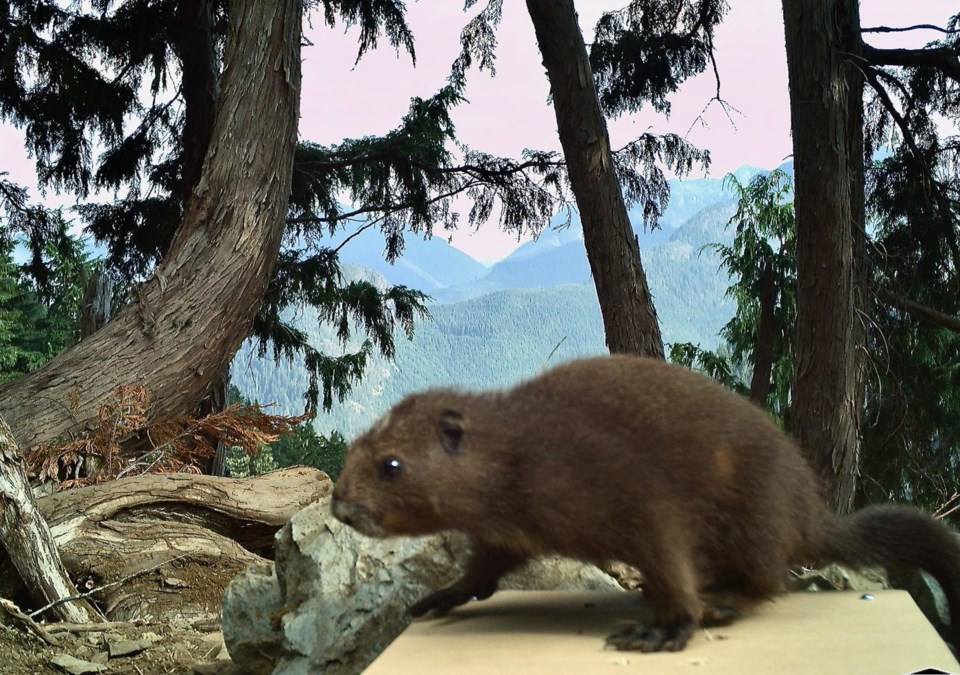Vancouver Island marmots can be a little shy when it comes to revealing their weight.
After two years of work, technicians and researchers with Vancouver Island University and the Wilder Institute are ready to deploy their latest version of an outdoor scale this summer to assess the health of the critically endangered species and determine if larger marmots have more babies.
"Body condition is a good indicator for survival, but also, perhaps more importantly, it can increase the fecundity of the females, so they can have maybe more pups in a litter," said Mike Lester, a technician in the faculty of science and technology at the university.
"And if there's just a very small increase in the average litter size, that might be the difference between the marmots on a decline or rescuing the species from extinction."
The scale is part of a study looking into the benefits of providing the wild marmots with calorie-dense biscuits near their wintering shelter to see if extra food boosts their body weight as well as their reproduction.
But putting a scale in the alpine that can survive outdoors and be sat on by a house-cat-sized marmot is not a simple task.
Earlier versions of the scale have had shiny aluminum or were plastic, in the name of keeping them waterproof, but the marmots weren't always a fan.
"They weren't too sure about the feeling of that. It's quite alien to them. So, now this iteration is going back to wood. Like a plywood surface, wooden that feels a bit more natural," Lester said.
Early research also relied on cameras on tripods to take pictures of the animals on the scales so staff could go through the footage and identify which one was being weighed. But those cameras would sometimes tip or roll down a hill.
In this new version, technician Devin Ayotte has outfitted the scale with technology that reads a chip implanted in each captive-bred marmot to identify them and store data when they step on the scale.
"The marmots aren't going to co-operate with us and assume the position when they climb up on top of the scale. So, we need something that can read reliably at a greater distance than the off-the-shelf solutions we found," Ayotte said.
The population of Vancouver Island marmots once dipped as low as 30 but has rebounded to at least 300 individuals in the last two decades.
Lester says marmots have been on the island since the last ice age, but their numbers went into a steep decline for many reasons, including climate change.
"Bringing that back is important, because they're part of the ecosystem in the alpine here. It's almost like a keystone species, because they turn over the soil, they provide habitat for other animals. They provide prey, secondary prey species, for things like cougars and eagles," he said.
"They're an integral part of it, and we've been the cause of their decline. So, I think it's important that we try to recover that species and try and undo the harms that we've done."
This report by The Canadian Press was first published Feb. 7, 2025.
Ashley Joannou, The Canadian Press



